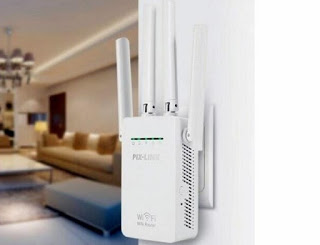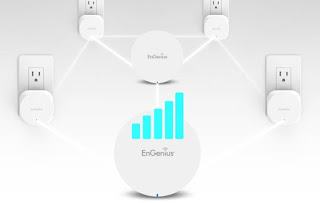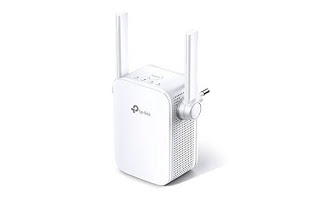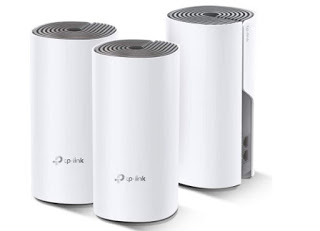We don’t know what to choose between Wi-Fi Extender or Wi-Fi Mesh? Let’s see together what is the best technology to expand Wi-Fi coverage.
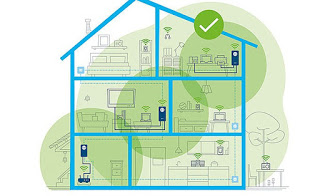 To expand the coverage of the Wi-Fi network in larger homes (or in buildings with a large number of neighbors’ wireless networks) it is possible to take advantage of two technologies: Wi-Fi Range Extender and the WiFi Mesh. Both allow to reach the set goal but profoundly changes the ability to cover large areas, the ease of configuration, the method with which the signal is transported, and also the price: for this reason before choosing whether to bet on one or on the another it may be a good idea to analyze both technologies to understand their secrets and choose only the one that suits our needs.
To expand the coverage of the Wi-Fi network in larger homes (or in buildings with a large number of neighbors’ wireless networks) it is possible to take advantage of two technologies: Wi-Fi Range Extender and the WiFi Mesh. Both allow to reach the set goal but profoundly changes the ability to cover large areas, the ease of configuration, the method with which the signal is transported, and also the price: for this reason before choosing whether to bet on one or on the another it may be a good idea to analyze both technologies to understand their secrets and choose only the one that suits our needs.
In the following guide, we will show you what are the differences between Wi-Fi Extender and WiFi Mesh and which one should you choose for the most common scenarios (large house, condominium, crowded neighboring buildings, office, etc.) so as to be able to make the best choice and spend the right amount without overdoing it.
READ ALSO -> Why WIFI is slow and how to fix
Wi-Fi Extender vs WiFi Mesh
In the following chapters, we will find in detail the difference between the two types of expansion and, in order not to miss anything, we will also be able to find some valid products to choose from both if we focus on the Wi-Fi Extender and if we want to extend the network with the WiFi Mesh. Before diving into the products, it is advisable to read the chapter dedicated to the scenarios of use, so as to find out which technology to use according to our needs.
What are the differences between Wi-Fi Extender and WiFi Mesh?
The Wi-Fi Range Extender O Wi-Fi repeater is the most proven technology for expanding the coverage of any Wi-Fi network.
The repeater can be placed on any socket and, once active, can extend the signal of an existing Wi-Fi network by creating a new Wi-Fi network, thus functioning as a real “bridge” between the modem and the furthest point of the house (not surprisingly it is recommended to place it halfway, where the original network signal still picks up well and can expand it easily). The feature that has made Wi-Fi repeaters so successful is the ease of configuration: The extended network uses the same name (with the addition of EXT) and the same password as the original network, thus making it very easy to connect and browse the Internet even from the farthest room in the house (up to 120 square meters). The only limit is on the number of Wi-Fi repeaters that can be used in the same house: it is difficult to configure and use more than two repeaters effectively.
The WiFi Mesh instead is the latest technology and allows you to create a new Wi-Fi network made up of a subset of networks, which communicate with each other creating a sort of “shared bridge” between the various access points (precisely the Mesh).
A device that connects to one of the access points will connect at the same speed as a device in the vicinity of the modem, given that the data packets each time choose the shortest route between the various access points in order to navigate. on the Internet; this makes Mesh WiFi the best choice for very large homes or offices (over 120 square meters) e it can be expanded simply by adding a new access point to the network, so as to infinitely expand the network coverage. The flaw of this technology is certainly in the price since to create an effective WiFi Mesh network it is necessary to use the starter kits from at least 3 access points.
To learn more we can also read our guides How does the wifi repeater or “Range Extender” work and which one to buy e Mesh WiFi: how to increase wireless coverage.
Technology use scenarios
As it is easy to understand from the previous chapter, the choice is quite obvious if we limit ourselves to measuring the square meters of our apartment, but the choice between the two technologies mentioned can also be made based on different types of needs:
- Only one room where he doesn’t pick up the signal: in this scenario, it is advisable to use a Wi-Fi repeater, since they are cheap and allow you to brilliantly solve any problem.
- Two neighboring rooms with no signal: if the rooms are adjacent, it may be useful to place a Wi-Fi repeater in one of them or in the communicating corridor, so as to effectively extend the network towards them.
- Two separate rooms with no signal: in this case, it can be very useful to use two separate Wi-Fi repeaters since they do not interfere with each other and can significantly extend the signal coverage of a single-story house.
- House on several floors: it is advisable to immediately focus on WiFi Mesh, so as to cover the house with the Wi-Fi signal both horizontally and vertically (using at least 3 access points).
- House with garden: if the house is small, a Wi-Fi repeater near the front door of the garden may be useful, otherwise we might as well place a WiFi Mesh access point in the immediate vicinity (we do not place any devices outside since all devices electronic devices are sensitive to rain and bad weather).
After reading the most appropriate usage scenarios in the next chapter we will show you which ones are the best models to choose for Wi-Fi Extender and WiFi Mesh.
Buying Guide
Now that we know what to choose, let’s see together the best models to choose for Wi-Fi Extender and WiFi Mesh. The best model to buy like Wi-Fi repeater is TP-Link Ripetitore WiFi Wireless, available on Amazon for less than € 35.
On this range extender, we find EU socket (Italian), adjustable antennas, AC1200 Dual Band Wi-Fi speed, 5GHz band for HD / 4K video streaming and online gaming, WiFi Extender, and Access Point functionality, WPS quick configuration button, and compatibility with Fiber and ADSL modems. Alternatively, we can take a look at the following Wi-Fi repeaters:
- Netgear EX6120 AC1200 WiFi Repeater
- NETGEAR WiFi Repeater AC1750 EX6250
- AVM FRITZ!Repeater 1200
- AVM FRITZ!Repeater 3000
If we want instead to use the WiFi Mesh we advise you to aim with your eyes closed on TP-Link Deco E4 Wifi Mesh, available on Amazon for less than 150 €.
With this kit, we will get three access points interconnected with Dual Band wireless, 802.11ac or AC1200 bandwidth, 2 Ethernet ports 100Mbps on each access point, Router and access point mode, and Parental Control system. Below we can take a look at the main alternatives:
- Tenda Nova MW6 WiFi Mesh, Dual-Band AC1200
- Wi-Fi mesh Amazon eero
- NETGEAR Orbi Wifi 6 Mesh RBK353
- Linksys WHW0303B Velop Sistema WiFi Mesh Tri-Band
- TP-Link Deco M9 Plus Wifi Mesh
WiFi Mesh models certainly tend to be more expensive, but the coverage they provide is unmatched (even up to 600 square meters).
Conclusions
The differences between Wi-Fi Extender and WiFi Mesh are really numerous, but both allow you to reach the set goal: expand the coverage of your home or office Wi-Fi network without having to go crazy in finding the right channels or moving the modem in absurd points. For a reduced network extension, Wi-Fi repeaters are fine, while to broaden the coverage in a decisive way it is advisable to immediately focus on WiFi Mesh, even if you spend much more.
To learn more we can also read our guides Best 5 GHz WiFi repeaters, to increase internet coverage e How to bring the Internet to every floor and corner of the house.

